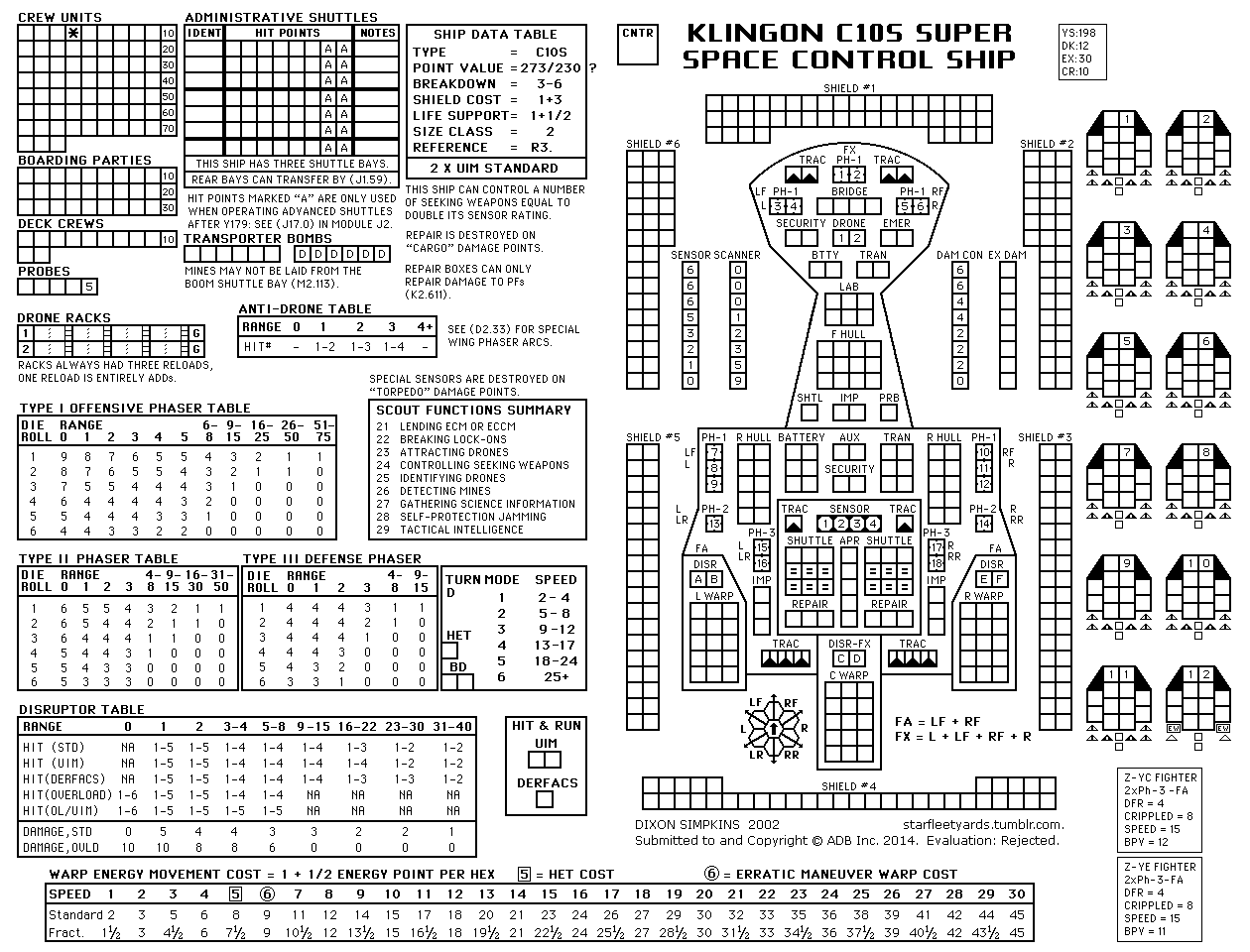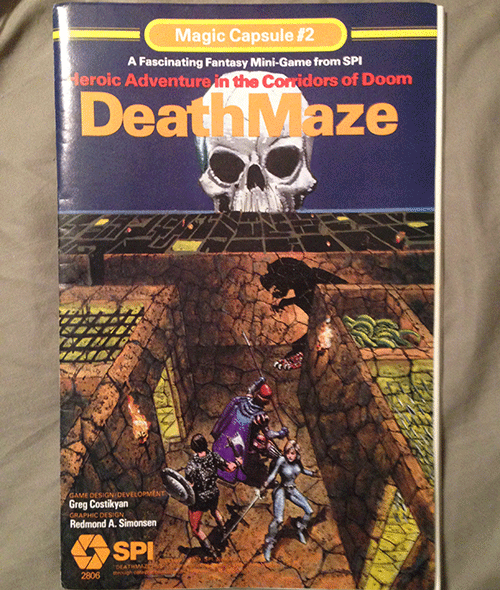Part 1 – Part 2 – Part 3 – Part 4 – Part 5 – Part 6 – Part 7
I was supposed to add a part where I was going to explain that nothing really begins anywhere.
The FPS didn’t begin with Doom, RPGs didn’t begin with D&D, and the fantasy genre didn’t begin with Tolkien. What’s fun is to dig out what came before, and then see if things could have also gone in a different direction. And so the time warp.
The problem is I already outpaced my train of thoughts and gone in a different sidetracks.
Here above I was commenting on Valkenburg Castle and how it’s a completely unknown little game that blends wargames and RPGs, in those chaotic and creative years when the classic historical wargames started to hybridize with fantasy and sci-fi.
So I thought, am I the only one seeing the huge potential in that small game? How it could be the gate to something bigger that didn’t happen?
Not really, because it did happen.
Weeks later after looking into Valkenburg Castle I realized the designer, Stephen V. Cole, is not some unknown dude who made that game and then disappeared from the scene, but he was the creator of a much bigger thing: Star Fleet Battles.
That’s a giant tactical game in space that continued to be relevant, despite its substantial grognard-ness, from 1979 to 1999, pretty much. That also spawned its supporting ecosystem of magazines like Nexus and Captain’s Log, while going though various versions of rules compilations and endless erratas. Pretty much like Advanced Squad Leader. But in Spaaace.
It also lead to the development of a new language that looks incredibly close to a cat walking on a keyboard:

Or, at other times, almost machine code:



Yes, we are grognard, but are we grognard enough?
I also found out that the format of Valkenburg Castle was actually copied from the “MicroGames” done by Metagaming (that also published the magazine The Space Gamer), that I also mentioned above because two of those microgames were “Melee” and “Wizard” designed by Steve Jackson that would then be joined to make their D&D rival called The Fantasy Trip.
These MicroGame games have all a similar format. A few pages of rules, an handful of counters and a game board themed around a concept.


Those were times of wild experimentation and hybridization, and it’s from there that D&D came out. What I absolutely didn’t know is that a whole lot more came out, and now I’m discovering it first-hard, as it happened back then. I’m finding that past that was overwritten and hidden away.
Going through all those loops made me find this:

And look more closely:

This guy that, if I’m not wrong, I heard about on this forum back then when I first found it. But I don’t remember what it was about. I think he had a blog where he ranted about stuff, those years when we all had a blog where to rant about stuff.
But Greg Costikyan made a lot of games, in the styles of these above.
One of them looks very closely to this idea of the solo dungeon crawler, where the dungeon is generated and assembled with some basic board pieces.



It too had the foundation for a “campaign”:

And so we are back to this idea of the unknown (forgotten) fantasy board game.
I wonder how much stuff does exist that indeed did happen but I simply know nothing about. I connected a whole lot of dots, but I really don’t know if the fantasy genre really mixed with the wargaming one. I knew about Star Fleet Battles, and all those variations of 4X and tactical battles (Starmada is another), but it all relatively blank when it comes to the fantasy side of things.
I wonder if there was an equally expansive fantasy cousin to those deep tactical sci-fi games. And probably it might be that Blackmoor that was then overwritten and erased by D&D, but I’m not sure. It might be once again that it exists and I know nothing about it.
In any case, to link back to the starting point, not even Star Fleet Battles was a beginning, of course.

That’s a real boat, from a different game called Battlewagon, also by Task Force. Wasn’t Star Fleet Battles about boats in space anyway?
But maybe not, because Battlewagon came out later that SFB… So who knows what came before SFB?
In any case, those years going from early 70s (or even before) to early 80s are a goldmine, if a little hard to dig.
I have to go back.
—
Oh, and I was forgetting. Sometime you have those widgets that give information about the “complexity” of a game.
I’m looking for the stuff in the “impossible” tier. that one step beyond the absolute grognard. The mind-bending, soul shattering bookkeeping.
And I CAN’T FIND ANYTHING.
They are all pansy “intermediate”, at best.
Now these days a game like Star Fleet Battles is up there with the absolute grognards, as I said.
…But back then?
Look at this shit:

Back then SFB was considered “introductory”!
Before everything got watered down into nothingness, those grandfathers of games didn’t cower in front of an handful of charts and tables. They knew their stuff.
But where the hell are the HARD games?! Have they transcended reality and left no trace?
(not everything written here is True, but a slight divergence of perception is in the nature of a time warp)
—
loses some of the essential ambition of the game in its presentation.
I rage at this. It’s always the same…
Anyway, I vaguely mentioned above Starfire, a close relative of SFB. That too got greatly expanded… and then dumbed down in the most current versions.
But it is interesting because Starfire was the foundation that lead to “Dwarf Fortress in space”. That grognard computer game known as Aurora.
Sadly the author decided to go through endless rewrites of the game, so it has stalled for years. But it’s probably the most ambitious 4X out there:
http://aurora2.pentarch.org/index.php?topic=5663.0
—
??? current version of Starfire (SOLAR Starfire) is pretty much unplayable due to the complexity (429 pages of text and more text…). It’s also poorly organized and you need to have played SF 2 or 3 (which are the playable but expansive versions) to be able to understand what the hell theya re talking about.
You might like looking into Victory by Any Means (VBAM). It’s much more simple, but still complex enough (especially if you use the first edition with expansions and optional rules) but much more playable. It is a campaign system with no tactical combat rules (you are supossed to either use the fast combat resolution included -works well for the scale- or plug in your favorite starship tactical combat system to resolve battles).
For fantasy I don’t think you have mentioned Dragon Pass yet (or White Bear and Red Moon if you want the very original). Cool wargame, average complexity on the basic, but loads of special rules and lots of flavor. Also, Heroquest’s setting comes from this game, so definitely another tie between wargames and RPGs.
Yes, from what I read the “good” version of Starfire was the third. The maximum “reach” of the game was between the third and fourth, but the fourth was a mess of its own and didn’t establish itself.
The fifth was an attempt to reorganize again the fourth, but it says right on their site:
“Updated over the next 5 years, the goal of ULTRA STARFIRE was to produce a set of rules that were streamlined, had reduced paperwork”
Of course that sounds good, but not in my peculiar book.
Then the sixth version continues pretty much the same.
In their own internal complexity chart Task Force, even the third version of the game, considered Starfire a “moderately” complex game. Only when you add the campaigns then it moves to “advanced”.
There’s a thread on Aurora forums where they discuss a bit the various versions:
http://aurora2.pentarch.org/index.php?topic=4731.0
I’ve also looked at other Task Force games and they are all usually “moderate” at best.
There’s also this thing about the YEARS. I pretty much can write off everything that comes after 1999 (at least through this retro perspective). It’s the whole mindset that got warped. That’s why it’s so hard to truly go back, because most current resources on the internet filter the old stuff through the modern point of view, rather than letting you FEEL the ways these games were perceived during their time.
So for example Starfire develops between 1975-80, then the second edition in 1984-85, and the third in 1992-93. The 90s is when everything IMPLODES. It’s when things start to get muddled. There’s some good stuff because it comes in the wake of some big games that still drag their origin with them, and those don’t simply vanish, but when something goes past early-90s then it means it most likely lost all its flavor. It’s game over.
Hence my reticence to consider Starfire in all its incarnations past the fourth. These are new species of gamers, even when they are old-schoolers and grognards.
—
Some info on that chimeric Sword Path Glory melee system:
“The rest of the combat system is also fairly complex. For example, combat takes place using a 1/12th of a second time scale. Weapon, shield, and movement speed are all tracked separately. When moving, you track acceleration, deceleration, and turn radius. There are specific rules for how armor affects damage — both inflicted and taken — and much more.”
SP:G is what you get when five off-duty engineers lock themselves in a room and they want some realism. It models able-bodied, right-handed humanoids *(he said it scaled down to dwarves really well, 4’2″ guys with 40″ vertical leaps in armor)* down to 1/10 second impulses, with linear and rotational acceleration rates, and every single swing. For damage, they modeled weapon tip shapes, body target areas, and the volumetric intersections thereof, and assigned hit point density values based on things like muscles/nerves/brains.
The designer of the game now works on slightly less complex stuff:
https://www.researchgate.net/scientific-contributions/2113111462_Barry_Nakazono